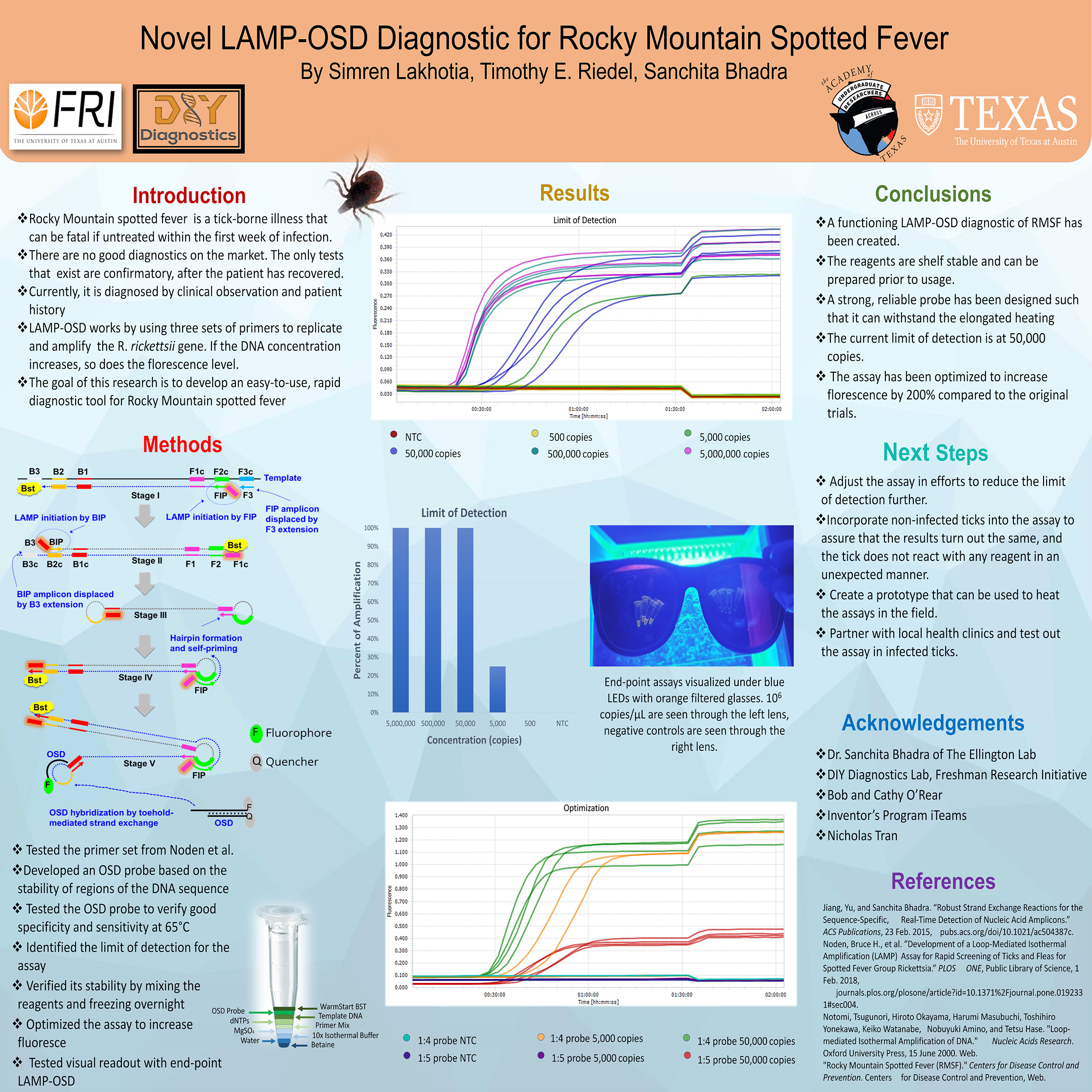Simren Lakhotia, Timothy E. Riedel, Sanchita Bhadra
Rocky Mountain spotted fever (RMSF) can be a deadly tickborne illness if not treated early, with the mortality rate increasing greatly if treatment is not administered within 5 days (CDC, 2017). RMSF is found in very low traces in the blood, making it hard to diagnose. A short diagnostic window paired with nonspecific symptoms, makes RMSF a good candidate for a developing DNA amplification process known as loop mediated isothermal amplification through one-step strand displacement (LAMP-OSD). LAMP-OSD amplifies DNA with high specificity, efficiency and rapidity under isothermal conditions by way of five primers. The goal of this study is to replicate the work of Bruce Noden and amplify a sequence of the R. rickettsii gene via LAMP-OSD. This allows the results to be analyzed more quickly and with simpler-to-access technology. Each assay is comprised of a specialized probe and a DNA sample. These were incubated over the course of an hour and a half to allow for amplification. Each assay was recorded every three minutes to keep track of the amplification. It was observed that the positive control of 104 copies/µL began significant amplification around the 30-minute mark, whereas the negative control of Enterococcus at 104 copies/µL did not significantly amplify. We found that the positives amplified, without creating false positives out of the negatives. There was a distinct difference in the level of fluorescence within our samples, making this a functioning LAMP-OSD diagnostic.

Comments
This is amazing! I can’t even imagine the time and energy put into this and I didn’t know Rocky Mountain Spotted fever was this deadly. I also enjoyed the video because you talked where Rocky Mountain Spotted fever comes from and I got to see how LED light can let us see the positive samples. —Nicole Azuike
Great job! In addition to the video being very helpful in explaining your work, the images and figures on the poster itself are also really useful. I especially like the photo of the assays seen through the filter glasses — it helps me get a sense of what it’s actually like for you when you’re working on this! —Rob Reichle

